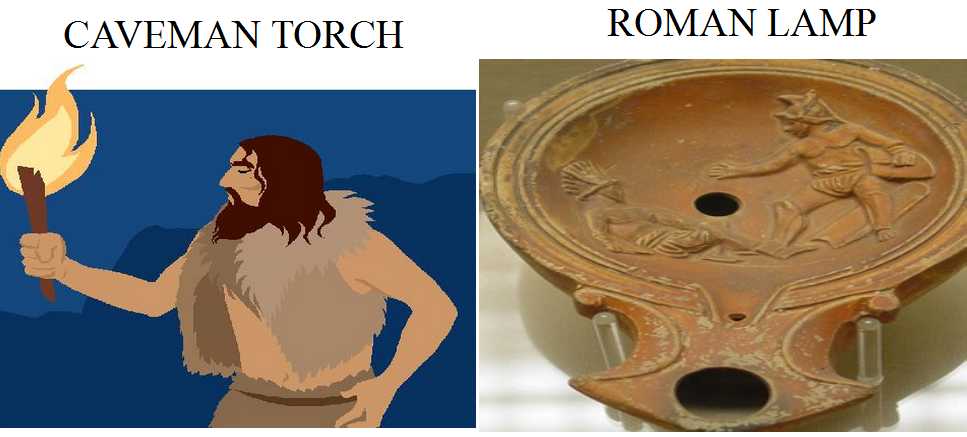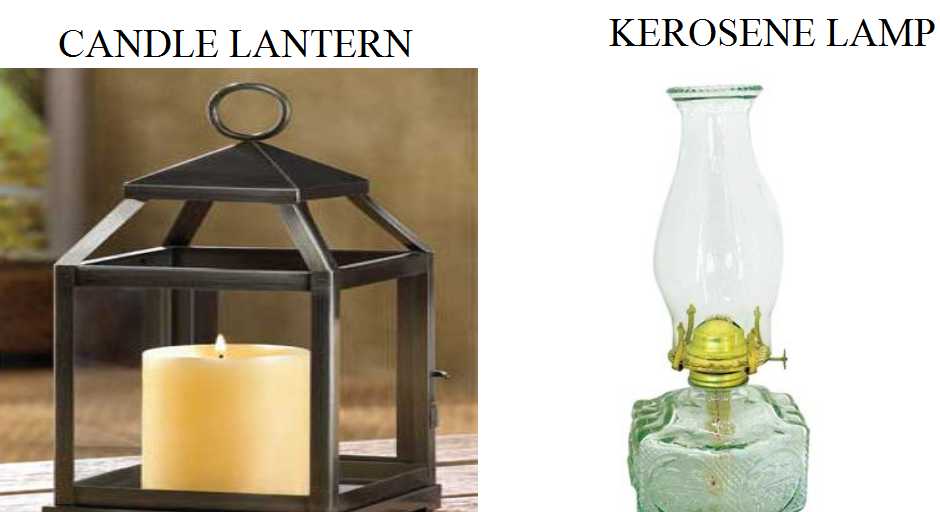354.HOW WERE LAMPS FIRST MADE?
Before man discovered fire, the only heat and light he had was provided by the sun. Since he couldn’t control this, he was quite helpless in dealing with cold and darkness.
Probably more than 100,000 years ago, he discovered fire. Then he began to notice that some materials burned better than others. Perhaps he observed that fat dripping into the fire from roasting meat burned brightly. As time passed, man began to select materials which, when burned, provided better light.
Splinters of certain woods were stuck into the wall and they burned slowly. Pine knots were used as torches. Animal fats were placed in shallow stone dishes and moss and other materials were used as wicks. These were the first oil lamps. Exactly when this happened we cannot know, since it was before recorded history.
The first candles were made by melting animal fats, such as lard and tallow, and pouring the liquid into a mold such as a hollow bamboo. Fibers twisted together were strung through the center so that when it cooled, the solid rod of fat had a wick in the center. Thus, the candle was created at an unknown date long before Christ was born.
Lard was used in lard-oil lamps in New England around 1820. From whale blubber, oil was extracted for whale-oil lamps. In fact, whatever kind of oil was easiest to obtain was used for lamps. Along the Mediterranean there are many olive trees. So olive oil was used for lamps there. The Japanese and Chinese obtained oil for their lamps from various nuts. Peanuts would probably be used for oil for lamps today-if mineral oil in the earth had not been discovered.
Petroleum was discovered in 1859. By heating this oil in a closed vessel, a thin colorless product known as kerosene is obtained. This became the oil most commonly used for lamps. In fact, it was first called “coal oil,” because people thought petroleum was associated with coal.
Do you have an oil lamp in your house today? Many homes keep one on hand to use in an emergency if the electricity should fail!




Leave a Reply